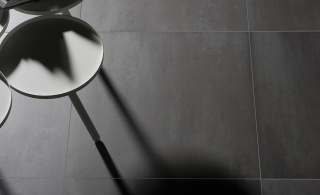Inspiration / Blog /
Installing large format tiles: What you need to know
April 4, 2024
Reading time 3 minutes
Using large format tile has many advantages. Among the most common advantages are easier maintenance and room size perception. Generally speaking it is far easier to clean the face of a tile than it is to clean the grout and large tile tends to make the room in which it is installed appear larger. The use of large format patterns also creates dynamic looks; dramatically increasing the visual impact of a space.
Below are three tips to maximize the advantages of large format tile:
- Ensure a flat surface.
Substrate preparation for walls and floors that will be tiled with large format materials must be perfectly flat. The level of flatness dictated by the Tile Council of North America for large format installations is 1/8” over 10.’ Not ensuring a flat substrate may create a condition where one edge of the tile is higher than the adjacent tile creating an uneven and unsightly appearance. This condition is called lippage.
- Use the right adhesive correctly.
Adhesive manufacturers offer an extensive range of cements, mortars, and epoxy’s designed for specific uses. Making sure you use the right one correctly for your large format installation is essential. Heavy, large format tiles used on wall applications are best installed using non-sag adhesives. TCNA recommends medium bed mortars for large format floor installs. TCNA also recommends full coverage on the back of the tile. Our advice is: don’t take any risks and always use the floating and buttering method when installing large format tiles. This method consists of applying the adhesive over the substrate and combing it using a notched trowel. After that, a thin layer of adhesive is spread over the back of the tile with the trowel’s flat side. By using this method, full coverage of the tile with adhesive is ensured.
- Specify grout joints compatible with the tile’s face dimension.
Shrinkage occurs when firing ceramic and porcelain tiles during the manufacturing process. This shrinkage is natural and results in creating a slight curve across the face of the tile. American Standards and Measurements (ASTM) dictate acceptable standards which for porcelain allow for a 1/8” variance from the highest point of the curve (in the center of the tile) to the lowest point of the curve (on the tile’s edge). The variance increases with the tile’s size and dictates the grout joint one should use to avoid lippage. This is especially important to consider when using large format tiles on walls with down lighting.
Mosa has developed various guidelines for the use of Mosa products. Please see our Installation advice XXL for more information about this subject.
The Tile Council of North America (TCNA) defines a large format tile as a tile with one side longer than 15 inch. Make sure your installer understands the size definition of large format tile, as per TCNA, as it will greatly impact how the tile is set. Following TCNA guidelines on large format tiles is the best way to ensure a beautiful , trouble free installation.
